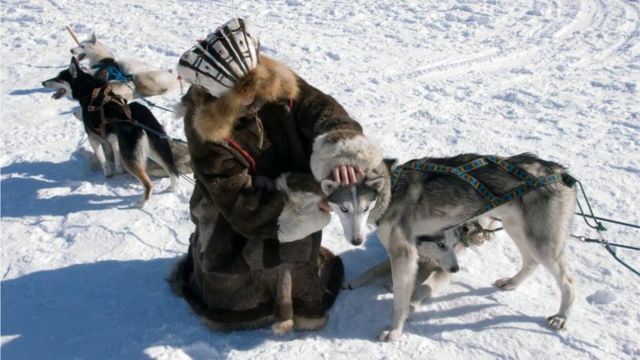Almost all animals, including those closest to us, have fur. So why is it not like that for us?
When a new creature came into the world and put us together with other animals, one of the first things that set us apart – aside from our bipedalism and special way of bathing – is our hairless bodies.
In general, compared to other animals, humans generally do not have fur (except for some, which are also rare). There are very few animals that also share this human anatomy – among them hippopotamus, elephant, rhinoceros, rat-taupe, whale, and a few others.
How did it all work out so well that we found ourselves exactly where we are? Is there an advantage to it now? And how do you explain why certain parts of the body have a lot of hair?
Yes, humans have a lot of hair: on average, we have about five million hair follicles on our body. But almost all of these tubes contain small, very simple, very small, very short tubes that allow us to enter these tubes that do not reach far into the body. These hairs are different from the long hairs that grow on certain areas such as the scalp, pubic hair, pubic hair, and beard in almost all men (after puberty).
Tina Lasisi, a biologist at the University of Southern California who studies fur and skin, says: “We normally have fur all over our bodies, very small hairs. They are so small that we cannot protect us as we should”.
Scientists don’t know exactly why this large and stable wool changed to very small wool, and they don’t know exactly when this happened. However, there is much debate about the causes of hair loss.
The most important one is based on the “control of body moisture”, known as the hypothesis de la “savannah”/”savannah” hypothesis. This theory suggests that it was necessary for early humans to have the ability to regulate their body temperature, which led to the loss of fur.
During the Pleistocene, Homo erectus, later known as hominids, began hunting in the wild, running for hours on end without the sophisticated hunting tools that later became available. ‘there first.
These activities may have caused them to develop problems with excess moisture – the resulting loss of fur may have allowed them to sweat and shed excess moisture without resting.
This is also based on research that shows the evolution of certain genes that make certain tissues from the organs that produce hair or produce hair.
Lasisi said: “So all of these factors play a role in the evolution of the body. Considering all of this and the other things we have been able to pick up about the genetic components that increase the variation in human skin color, we can confirm without a doubt that from 2 million to 1.5 million years ago…humans may have lost their hair”.
A related theory developed in the 1980s suggests that changes in bipedalism reduced the usefulness of fur. Since we can grow a horse without fur, this is an advantage over having fur.
Mark Pagel, a professor of evolutionary biology at the University of Reading, says that although the idea of reducing body temperature seems to be very reasonable and may even be safe, it has problems in some areas.
He says: “Considering our body’s moisture in a 24-hour period, we tend to lose more moisture at night than we would like, so this means that the result of hair loss is that we are constantly losing energy.”
He also says that there are many people who haven’t run in hiding for thousands of years, but none have returned to being fur, and many now live in very different regions of the world.
Meanwhile, Lasisi says that hyperthermia may have been a bigger problem than hypothermia in equatorial Africa. ), which is where humanity began. “It seems to me that there is a struggle against excess humidity, rather than a relative humidity”.
He also says that many ecosystems can change irreversibly – so that it is difficult to return to the way they were before. Finally, he added that when people arrived in regions of extreme cold, they had already chosen other methods of warming themselves, such as fire and heat. They are also similar to those who opt for other winter training techniques, such as fat adaptation (adaptation de la graisse brune/brown fat adaptation).
In 2003, Pagel and his colleague Walter Bodmer at the University of Oxford gave another lecture on why the first humans lost their fur, the idea based on parasites that infect the body, which they called the ectoparasite/ectoparasite hypothesis. They explained that the hairless monkey was not attacked by bees, which gave it a special advantage.
“When you look around the world, fleas are still a big problem, like fleas that cause disease,” Pagel said. it caused the transformation of humanity, and it is still happening today”.
Pagel says that “nothing has come to contradict” this theory since he and Bodmer first presented it.
Lasisi says he can’t rule out factors that contribute to hair loss. For him, “you have to wonder why this happens to people but not to monkeys, to monkeys”.
“It seems that he cares more about things that can show behavior or migration that separates humans from apes in a way that would require man to lose his fur”.
One of these things could be making clothes from the fur of other animals that they can strip and wash.
Charles Darwin, meanwhile, speculated that our loss of fur was the result of sexual selection – our ancestors chose to mate with those with less fur. Most researchers do not believe that this is the main cause of hair loss.
But when we are talking about being hairless people, there is one question that keeps coming back: why do we have hair on our head, genitals and genitals?
Lasisi has researched this issue, and in the days his findings are going to be published, he says: “What is clear is that people may have kept their hair on their head and it was naturally grown, but also very thin to reduce the severity of the problem. rays from the sun”.
He says that human hair is very thin so that it leaves a path and breath, which makes it possible to reduce the severity of the humidity and reduce the amount of moisture that reaches the head.
As for the hair on the genitals or pubic hair, Lasisi believes that it is something that came from other things that happened, or it could be the remains of the hormones that the ancestors used to fertilize each other (there is no real evidence that people still use this type of hormones).
Whatever caused us to lose fur, there is one possibility: it coincided with how the skin of the first people changed color, where the fur was used to protect the body from the sun’s rays.
“It’s a logical conclusion,” Lasisi said. “It’s possible that some people are born with no hair at all, and then they change over time as their skin changes. Or maybe there’s been a gradual loss of hair as the skin changes.” it was changing”.
Although it’s a good thing to think about how we lost our fur, it may be a bad thing for our lives now. But research shows that understanding this problem can affect people who have lost their hair involuntarily through chemotherapy, in the form of chemotherapy for the treatment of cancer (cancer), or diseases that cause hair loss.
In early 2023, Nathan Clark, an ecologist at the University of Utah, along with his colleagues Amanda Kowalczyk and Maria Chikina at the University of Pittsburgh, studied the habitats of 62 breeding animals, including people to see the changes in the natural features that hairless animals have that distinguish them from their fur-bearing counterparts.
They found that humans have genes that allow the skin to grow fur all over the body, but genes that prevent the fur from appearing.




